Prague and Vienna are two of Europe’s most well known cities. Both are connected to each other by multiple train services a day, with most services run by state operators Czech Railways (České dráhy) or the Austrian Federal Railways (ÖBB).
There are 2 distinct tiers of services – the Eurocity (EC) services, and the Railjet (RJ) services. The EC usually requires a change of trains, is slower, but is cheaper. In contrast, the RJ is both ČD and ÖBB’s top tier express service, providing a nonstop travel option between Prague and Vienna at a higher ticket price.
The brand “Railjet” refers to the Siemens Railjet trains that operates the route. It is a locomotive drawn high-speed train with a top design speed of 230km/h. Railjet operations are synonymous with the ÖBB, who runs the trains on a variety of routes within Austria and to various Central European destinations beyond. On the other hand, ČD’s much smaller fleet of Railjets are operated exclusively between Prague, Vienna, and Graz.
Fun fact: ÖBB's rationale of choosing a push-pull setup instead of a conventional electric multiple unit was to allow usage of ÖBB's existing fleet of Siemens Taurus locomotives.
The RJ 75 is a Railjet service between Prague and Graz, with key stops at Brno, Břeclav, and Vienna. I had the opportunity of taking this service between Prague and Vienna in 2017, which had a scheduled departure time of 10:52am. At that time, the RJ 75 bore the name “Franz Schubert” – the well known Austrian composer.
First published 26 May 2017. Updated 4 February 2023.
2023 Update: As of 2023, the RJ 75 service is no longer known as the "Franz Schubert", and no longer departs at 10:52am. It's new name is the "Vindobona", and now departs at 08:24am. "Vindobona" is a name previously used for the international trains running between (East) Berlin and Vienna via Dresden and Prague. The routing to Berlin was restored between June 2020 and December 2022, but the Vindobona has been truncated back to the Prague - Graz sector.
Booking my ticket
I bought the tickets for this trip on the Czech Railways website for both myself and my travel partner. These 2nd class tickets came at a total cost of 1048 Kč (€38.00), or 524 Kč (€19.00) per person, albeit without a seat reservation.
2023 Update: A 2nd class ticket on RJ75 today now seems to start from 588 Kč (€24.77) onwards. Ticket prices are demand-responsive, so book your tickets early if you can. You can also book on the ÖBB website, but the prices will be quoted in Euros instead.
For a 4 hour trip between two of Europe’s most popular cities, a one way ticket at €19.00 on Czech Railway’s flagship (high-speed!) train was quite impressive. This is even more so when one considers the fact that a similar journey in Britain between two major cities could cost more than that. Malaysia’s KTMB, on the other hand, manages to charge a similar price for journeys between Kuala Lumpur and Butterworth, charging RM 80.00 (412.16 Kč) for the 4 hour one-way trip.
Note: Your ticket will not include a seat reservation unless specifically added on. On some Czech Railways services, a seat reservation is mandatory, while regional trains generally do not require them. This trip on the RJ 75 to Vienna did not require it, but the downside is that we had to hunt for available seats.
Departure experience at Prague (Praha hlavní nádraží)
Prague’s central station (Praha hlavní nádraží) is well connected to the rest of the city. If you’re coming on the Metro, the station is connected to Line C with an underground station that sits directly beneath the main concourse.
You unfortunately won’t get a classical architecture concourse experience here, as the main concourse today is a 1977 extension built right below the motorway that was installed directly in front of the old station hall. This makes access to the extension via the Metro a far more pedestrian friendly option than using the old building, as the motorway essentially cut off the old station from the urban fabric of the city.
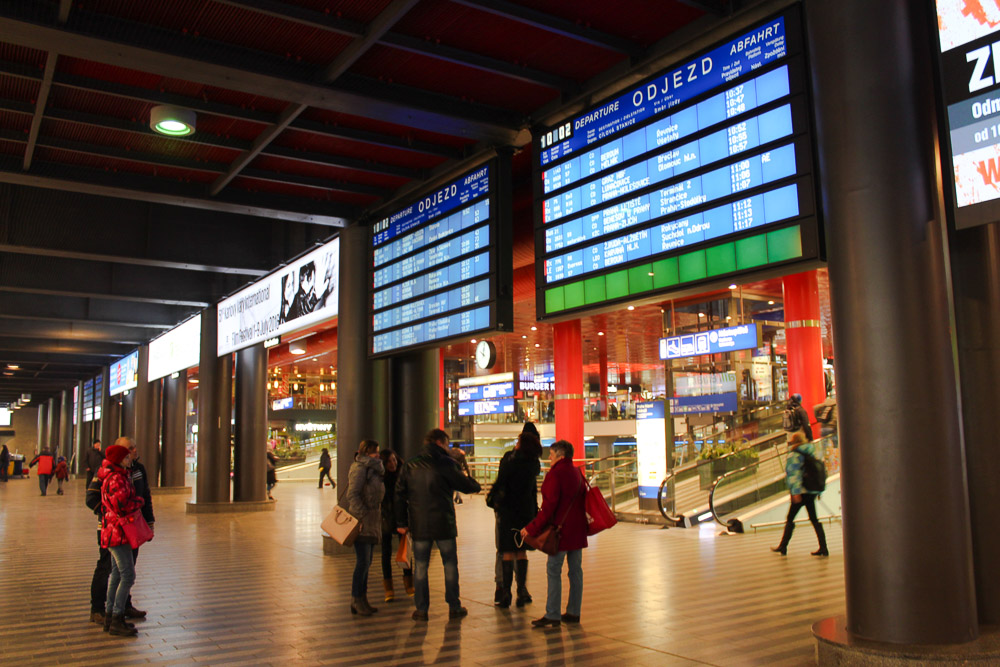
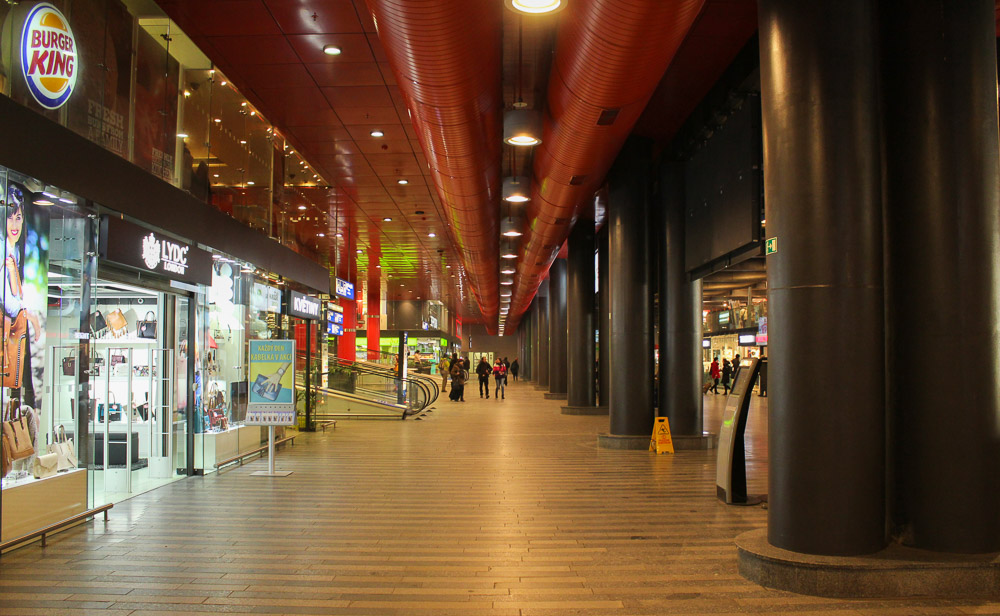
You can still visit the old station hall, accessed by an escalator in the mezzanine and is quite the charming space. It features a dome with a display of various coats of arms, one of which is Prague’s. There is also a piano there as part of an art project but it wasn’t playable when I was there.
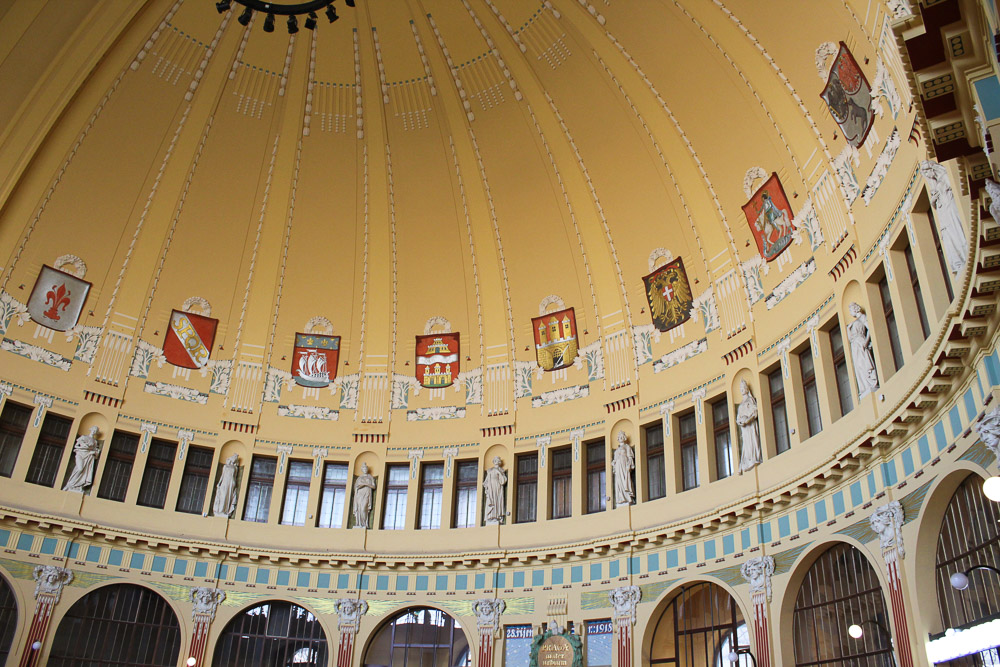
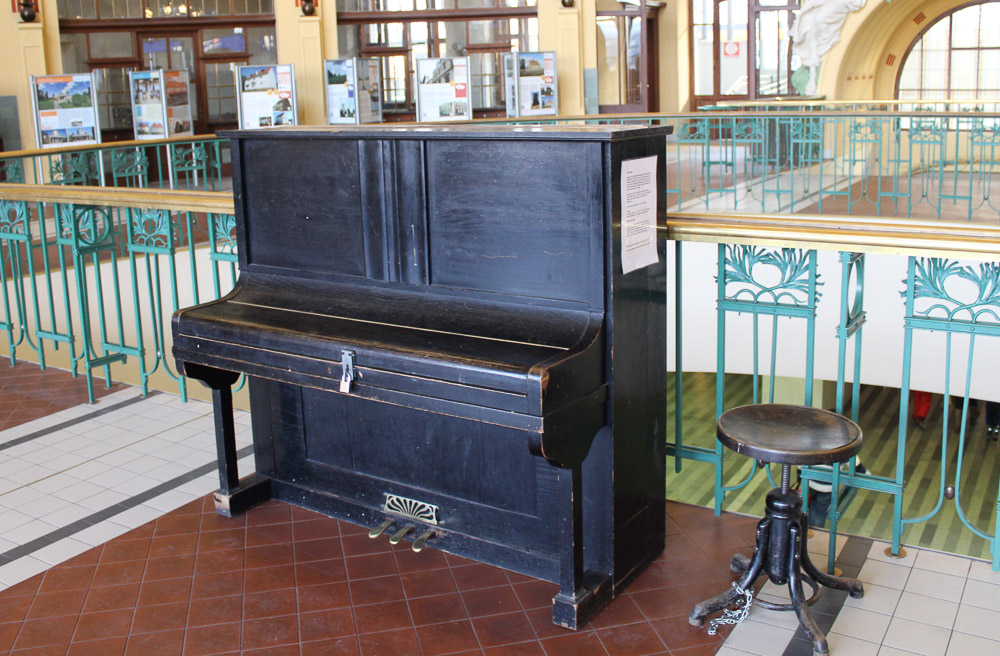
There are some shops at the 1977 era concourse for some last minute shopping. I liked that their positioning was not intrusive to passenger flow, and was located before the mezzanine and corridor leading to the platforms. ČD ticket offices are also located here if you need tickets or have your queries answered in person.
An interesting feature was a few interactive screens which showed the types of train sets utilised by upcoming services, so you could tell if your train was a fancy Railjet, a less glamorous loco-hauled consist, or a high-tech Pendolino unit.
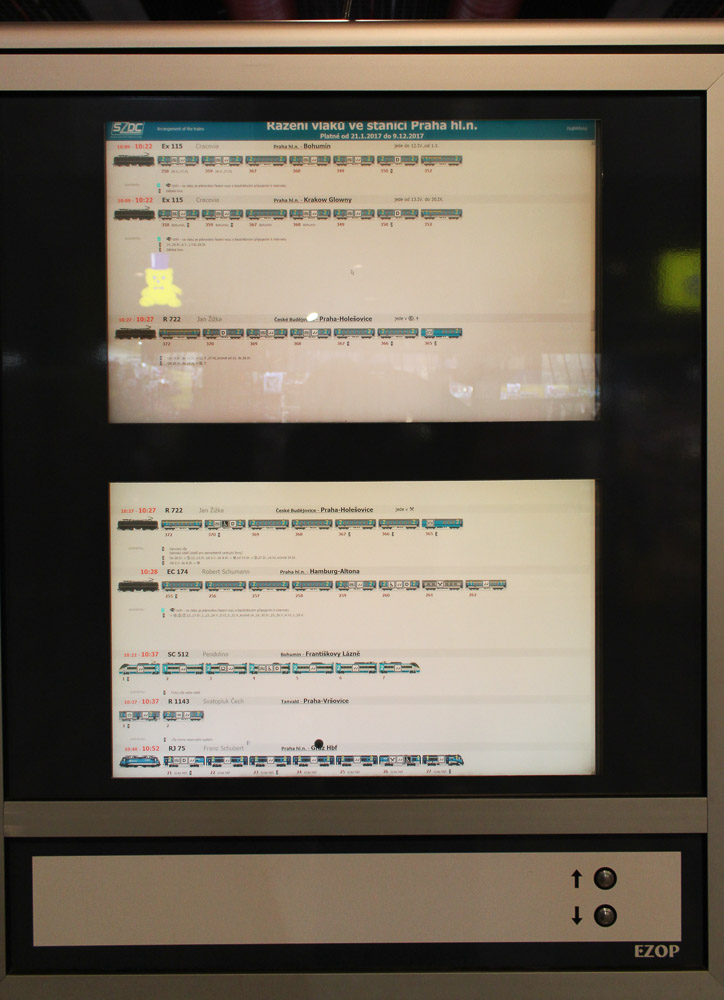
Moving up to the mezzanine level just before the corridor to the platforms brings us face to face with multiple banks of departure information screens, which caters easily to the large number of people waiting for information on their trains. It was a convenient setup, though the mezzanine felt rather claustrophobic since the floor was closer to the ceiling than the concourse below.
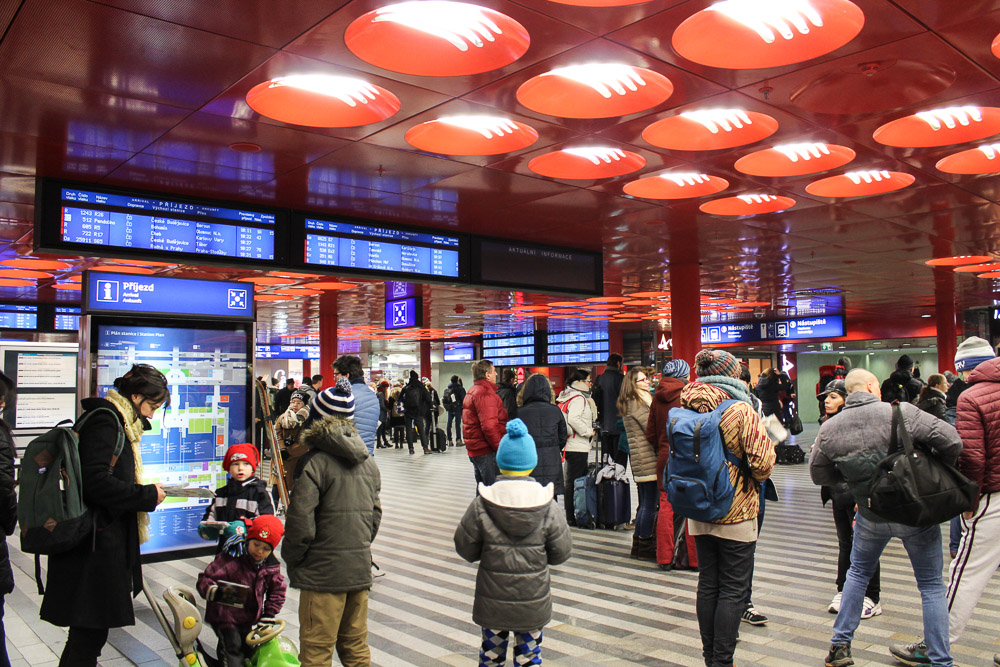
The only corridor to the platforms is also connected to this mezzanine level, so it could get a little bit crowded as well.
The appearance of our train’s platform number on the screen prompted us to join the crowd of passengers heading to the platform, where I had my first view of the sleek Railjet.
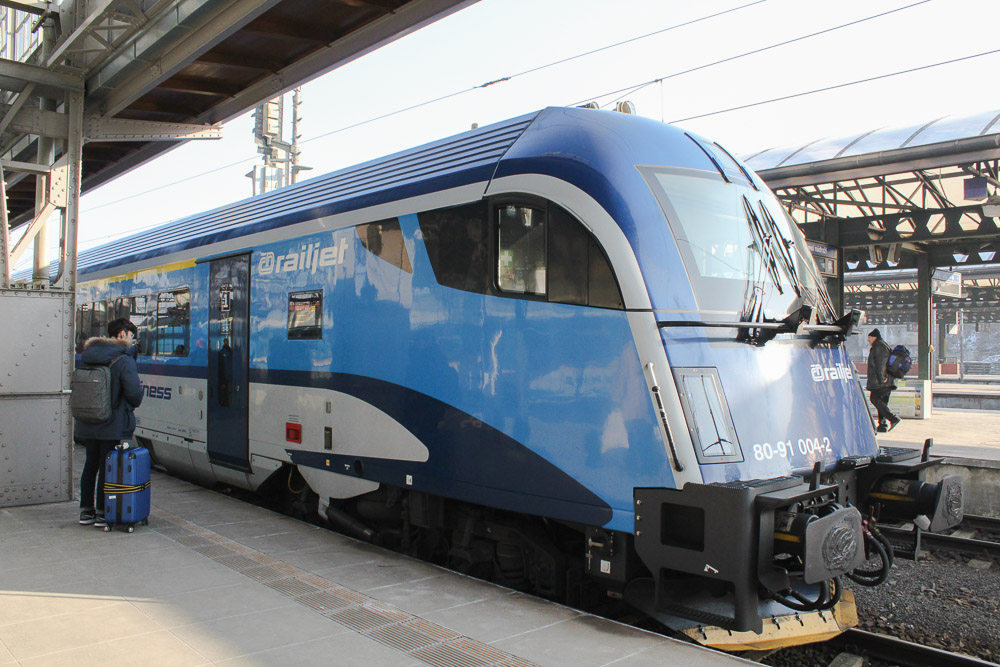
We departed on time at 10:52am. Czech tracks out of Prague are well maintained and soon we were hitting over 100km/h, helped by the Nové spojení (opened in 2010) that straightened and quad-tracked the line heading out of Prague. We also passed some CityElefant trains operating the suburban Esko services, and it was clear why they were called “Elefant”.




Cabin & Onboard Amenities
My first impressions of the modern interior were good. The interior of the Railjets were clearly designed to set them apart from the regular loco-hauled Eurocity/Intercity services which, from experience, had a rather uninspiring feel to them. Not the Railjet, though, this train is fast and fancy, and clearly ČD wanted you to know that.
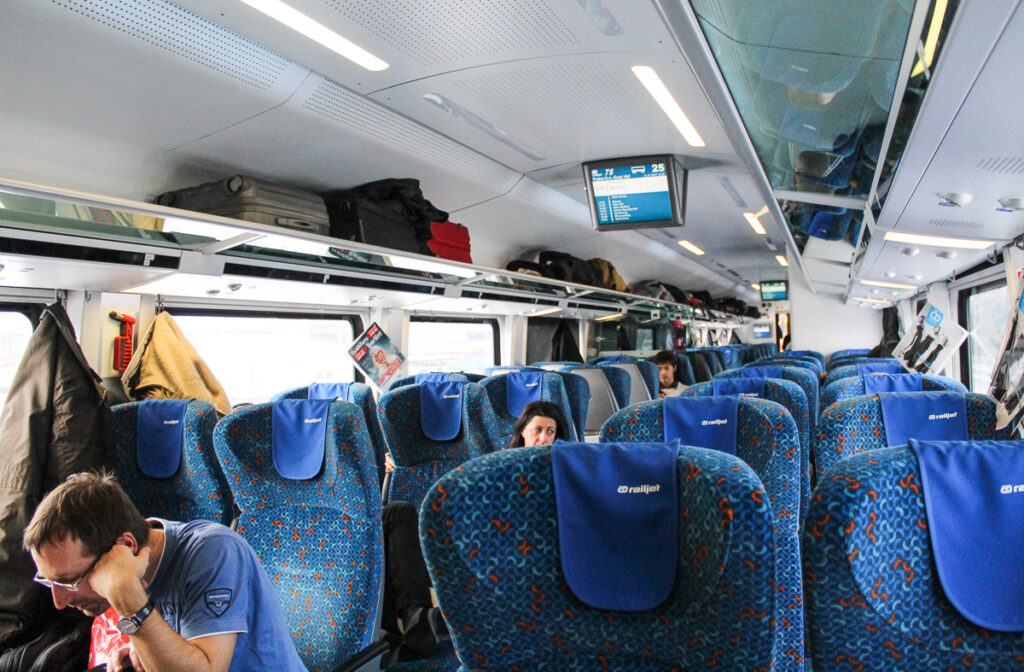
There was also special literature at each seat advertising the Railjet services and routes of both ÖBB and ČD, as if it wasn’t clear enough that the Railjet were both operators’ flagships.
The Railjet 2nd Class seats
We managed to secure ourselves facing seats right next to the vestibule door, which came with a fixed table in between the two facing rows of seats. Most of the carriage behind us were made up of airline style seats with half of the carriage facing forward and the other facing backwards. if you really need to get a hold of one of these, I’d recommend making a seat reservation.


The 2nd class seats were nothing special, and was identical to most modern intercity train seats out there. The seat had no recline which was a pretty odd feeling, but if you’re feeling stiff I guess you could take a walk instead. Note that the 2nd class seats on the ÖBB Railjet sets are identical to the Czech trains, with the exception of the colour of the upholstery.
Onboard Amenities
Unlike the previous 4 hour Eurocity ride from Berlin, this ride on the Railjet seemed a lot speedier, and I didn’t particularly feel the need to explore the trainset like I had done on Robert Schumann. I did go off in search of the bistro car, but I wasn’t feeling that peckish so I decided to eat the sandwich I’d bought earlier at the station instead.
As listed on the ČD website, the Railjet features onboard Wi-Fi and 230V power sockets at all seats. Note that the Wi-Fi may only be usable within the Czech Republic, and the power sockets are the European standard.
For ČD's dedicated info page on the Railjet, visit https://www.cd.cz/en/nase-vlaky/railjet/railjet/-27275/
The view outside
The weather was mostly clear and sunny unlike the day I travelled to Prague. This gave pretty nice views of the frost covered fields, which gave way to snow blanketed ones as we turned south to the Austrian border.





It was also nice to pass through the smaller Czech stations. I found it impressive they were quite well maintained and have been upgraded – a visual reminder of Czech economic progress after the fall of the Marxist-Leninist system in 1989.
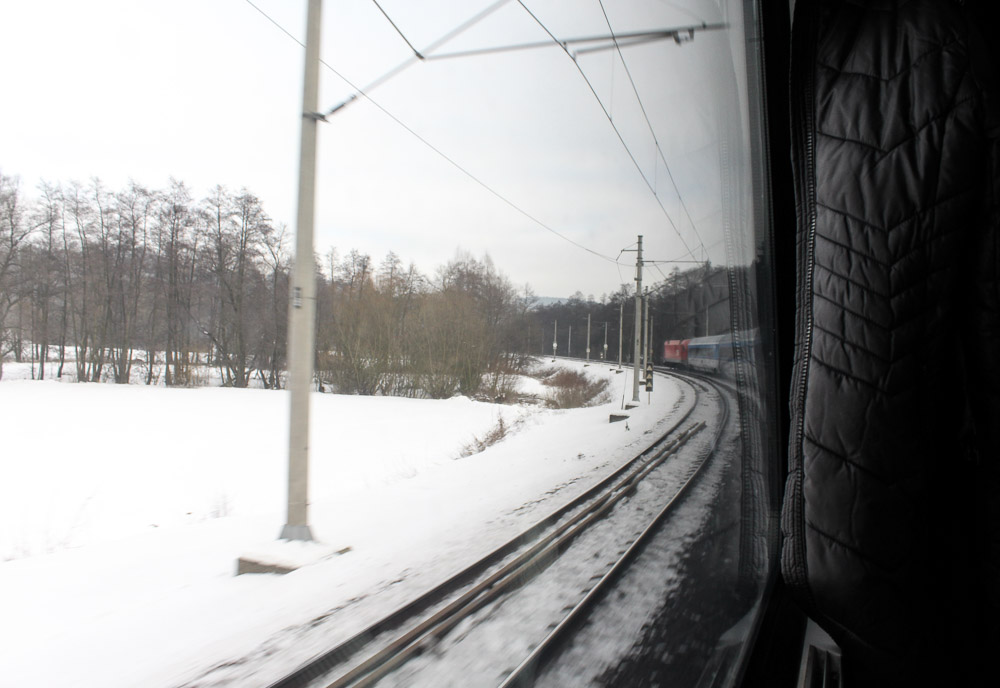
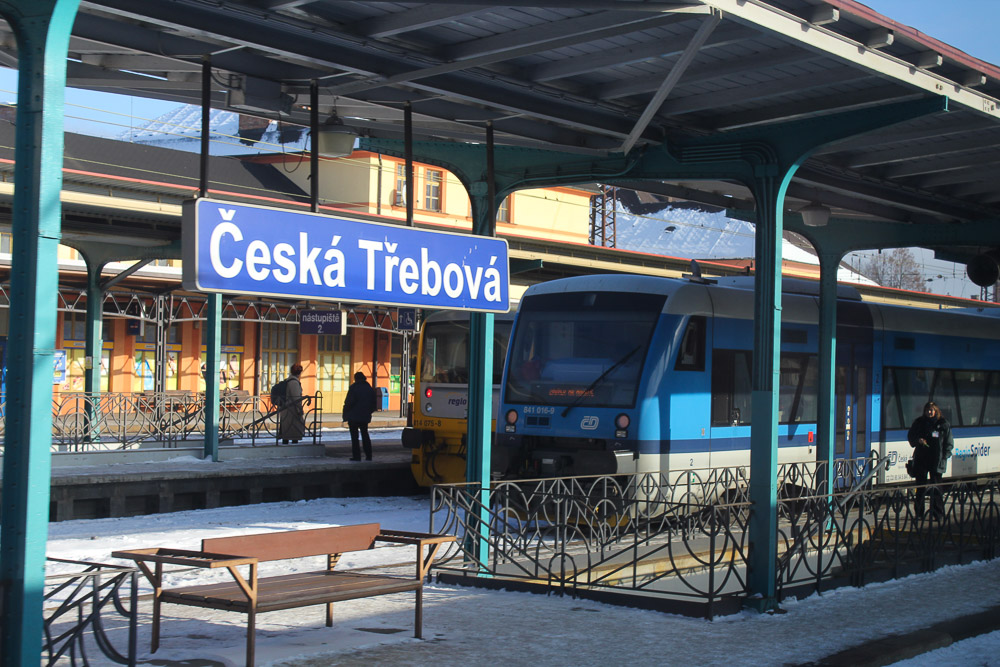
Arrival in Vienna (Wien Hauptbahnhof)
Too soon, however, we found ourselves pulling into Vienna.
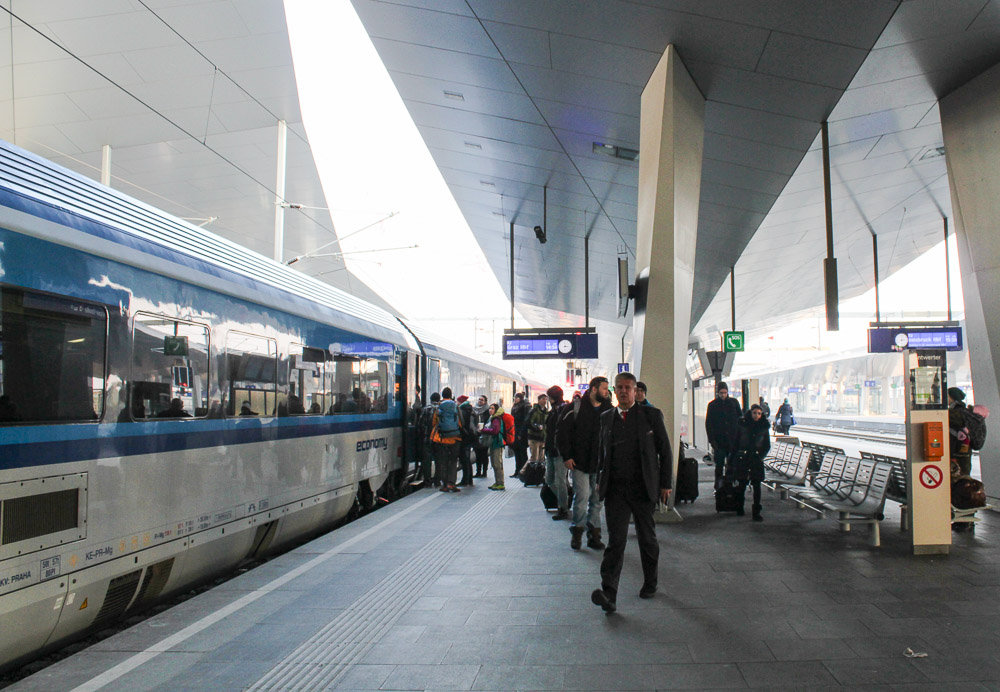
Vienna’s central station is a very new development, completed only in 2015 and replacing the previous Südbahnhof at the same site. It is not actually centrally located, with that honour going to Wien Mitte station, though the Hauptbahnhof handles all mainline railways services going through Vienna, and is well connected with Vienna’s tram, S-Bahn and Line U1 of the U-Bahn.
The architecture is ridiculously ultra-modern and very angular. The platforms were covered by this triangular shaped pillars and roof, the common concourse had metallic and turquoise-coloured glass walls, and the exterior structure practically yelled modernism and glassy.
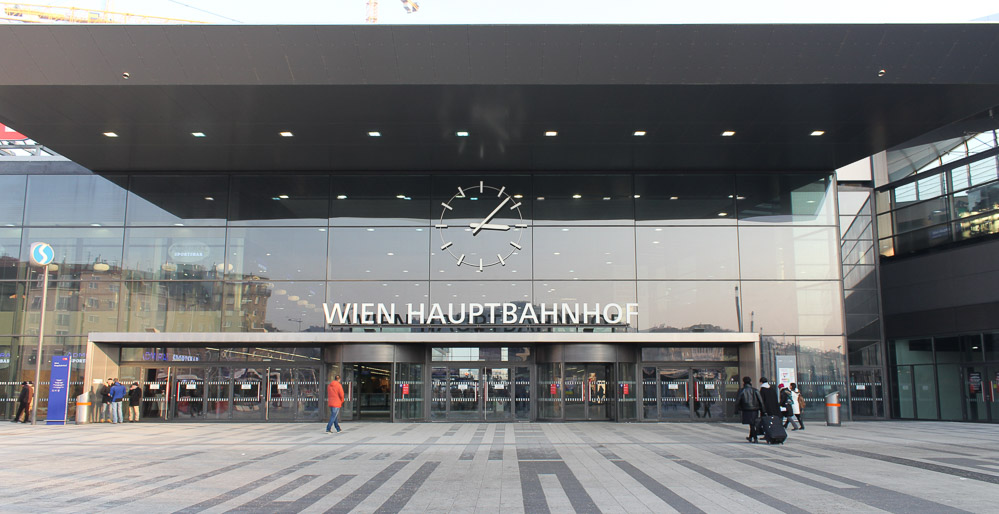
Final thoughts
It was a nice first introduction to the Railjet, and I was certainly impressed by the quality of the onboard design. Though I must admit the fun soon gives way to the monotone routine of a regular intercity services.
ČD gave a reliable and consistent experience again, and I certainly won’t have qualms travelling with them again in the future.
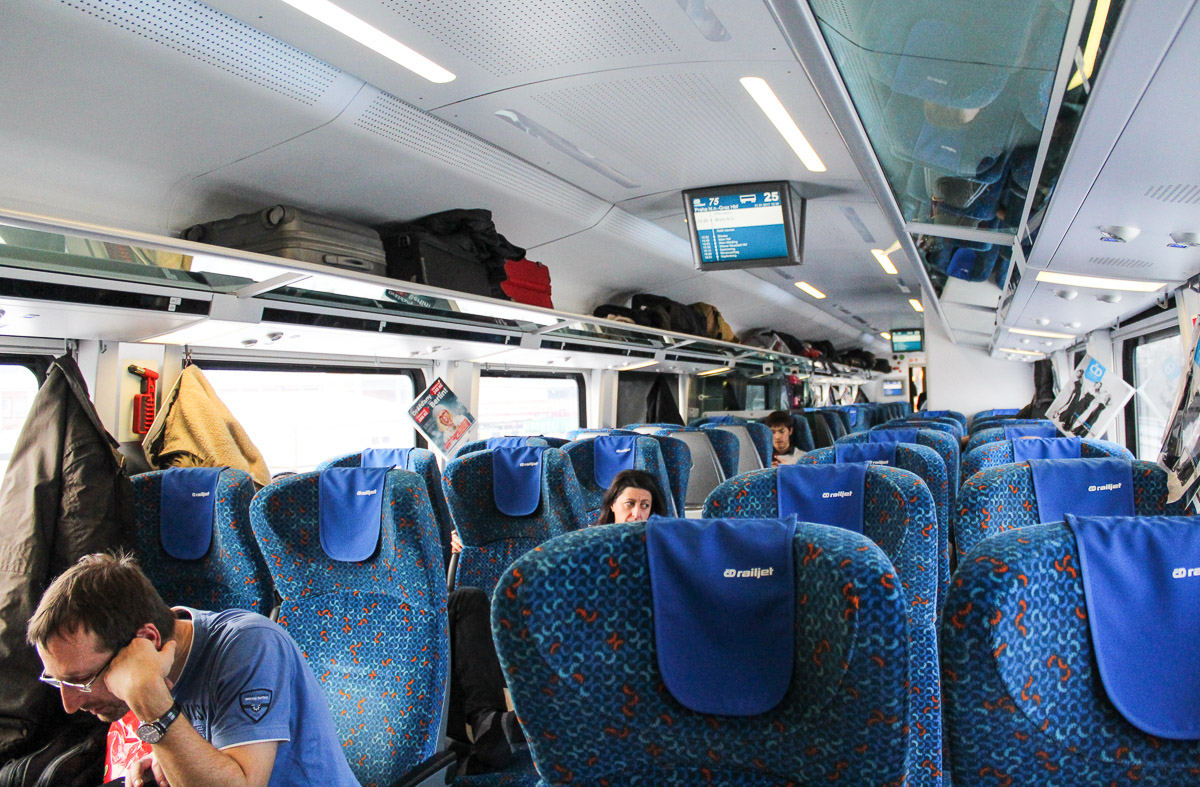
Leave a Reply